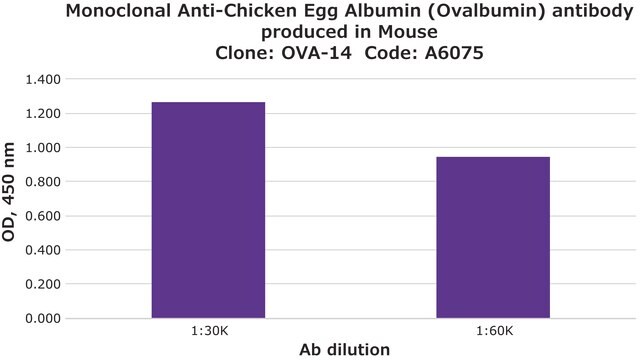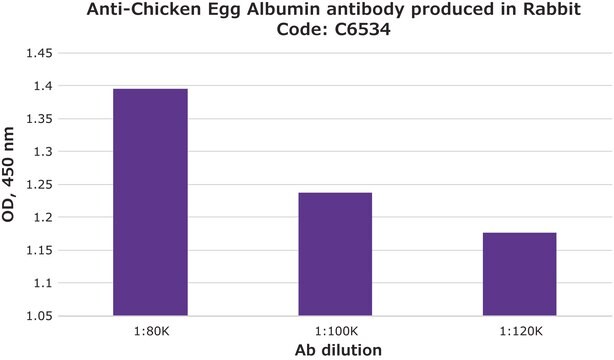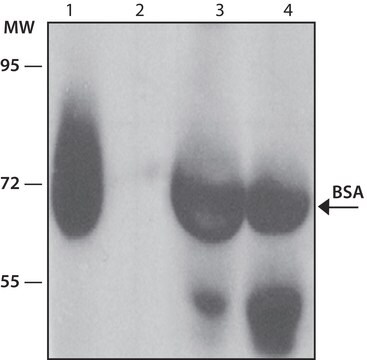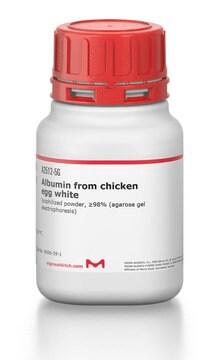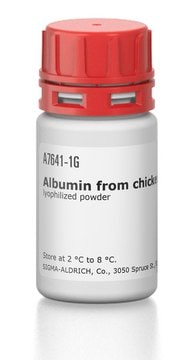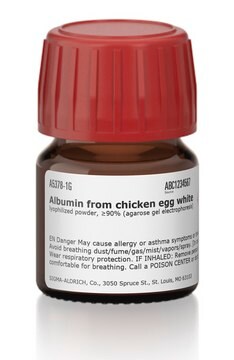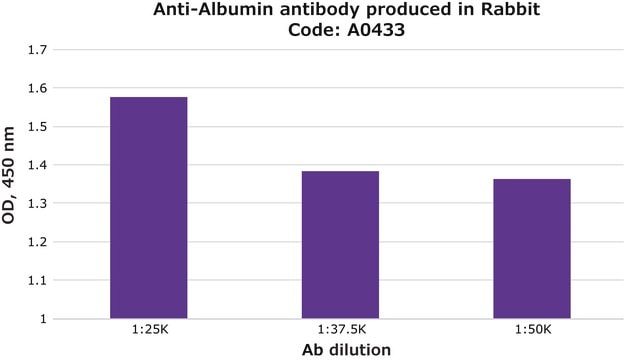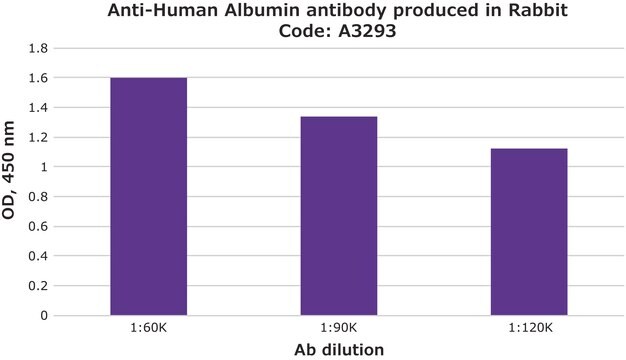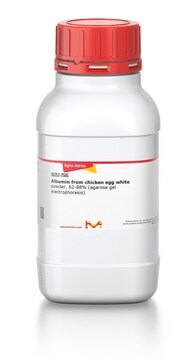SAB4200702
Anti-Chicken Egg Albumin (Ovalbumin) antibody, Mouse monoclonal
clone OVA-14, purified from hybridoma cell culture
Sinonimo/i:
Albumin, Plakalbumin, chicken egg
About This Item
Prodotti consigliati
Origine biologica
mouse
Livello qualitativo
Forma dell’anticorpo
purified immunoglobulin
Tipo di anticorpo
primary antibodies
Clone
OVA-14, monoclonal
Stato
buffered aqueous solution
PM
antigen 45 kDa
Reattività contro le specie
chicken, turkey
Concentrazione
~1 mg/mL
tecniche
competitive inhibition ELISA: suitable
dot blot: suitable
immunoblotting: suitable
indirect ELISA: 0.1-0.2 μg/mL using 10 μg/mL Albumin from chicken egg white (A5503) for coating.
Isotipo
IgG1
Condizioni di spedizione
dry ice
Temperatura di conservazione
−20°C
modifica post-traduzionali bersaglio
unmodified
Informazioni sul gene
chicken ... Oval(396058)
Descrizione generale
Ovalbumin (323-339) is the most abundant egg white protein surrounded by B-cell epitopes, which are bound by specific IgE antibodies. In addition, it also contains CD4+ T cell epitopes. Ovalbumin is a monomeric protein with a molecular mass of 45000Da.
Immunogeno
Azioni biochim/fisiol
Stato fisico
Stoccaggio e stabilità
Altre note
Esclusione di responsabilità
Non trovi il prodotto giusto?
Prova il nostro Motore di ricerca dei prodotti.
Codice della classe di stoccaggio
10 - Combustible liquids
Punto d’infiammabilità (°F)
Not applicable
Punto d’infiammabilità (°C)
Not applicable
Scegli una delle versioni più recenti:
Certificati d'analisi (COA)
Non trovi la versione di tuo interesse?
Se hai bisogno di una versione specifica, puoi cercare il certificato tramite il numero di lotto.
Possiedi già questo prodotto?
I documenti relativi ai prodotti acquistati recentemente sono disponibili nell’Archivio dei documenti.
I clienti hanno visto anche
Il team dei nostri ricercatori vanta grande esperienza in tutte le aree della ricerca quali Life Science, scienza dei materiali, sintesi chimica, cromatografia, discipline analitiche, ecc..
Contatta l'Assistenza Tecnica.